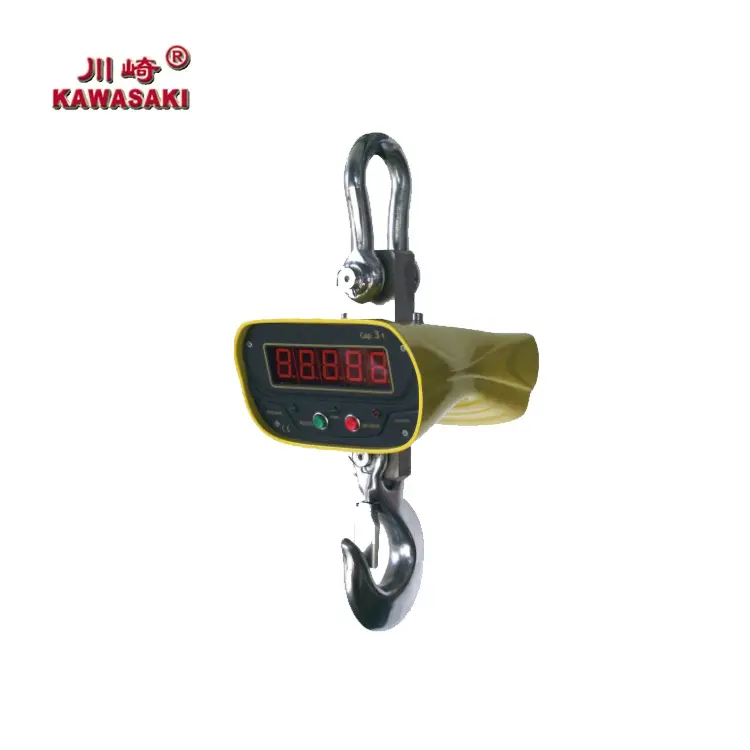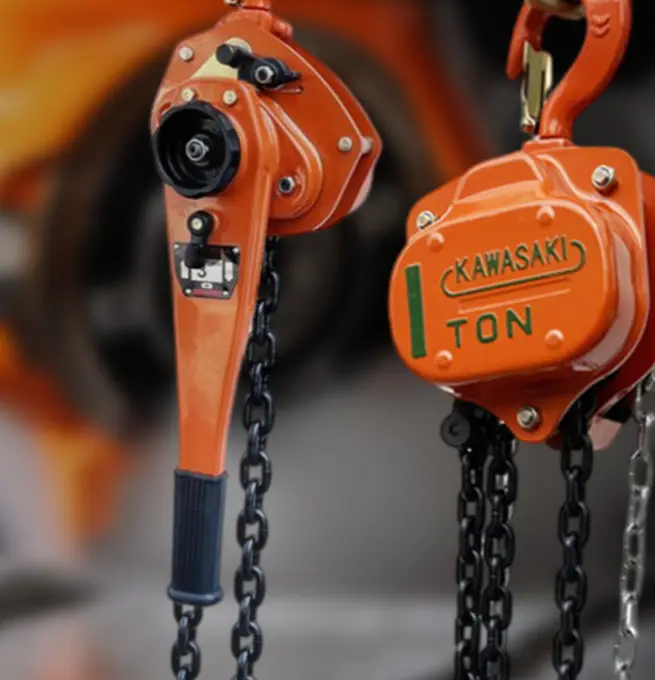Walk into almost any workshop, warehouse, or port and you’ll find one thing in common: everything needs to be weighed. Steel beams, machine parts, construction materials—they all move through the chain of supply, and accuracy matters. While most crane scales can display weights in kilograms, switching to pounds often makes life easier, especially if your business works with overseas customers who think in lbs, not kg. It sounds like a small detail, but unit choice can have a big impact on efficiency and communication.
This article looks at why pounds are often the better unit for global operations, how crane scales allow you to change units, and how Apollo’s KAWASAKI CRANE SCALE models provide practical solutions for real industrial needs.
What Makes Pounds a Preferred Unit in Global Trade
Wider Acceptance in International Markets
In North America, almost every order form and shipping label is written in pounds. If your team sends equipment from Taiwan to Texas or spare parts to Canada, converting kilograms into pounds by hand takes time and leaves room for mistakes. A scale that can instantly show pounds saves frustration at both ends of the trade.
Easier Comparison Across Industrial Standards
Many industrial standards, especially in the U.S. steel and construction sectors, are set in pounds. Imagine an American buyer asking if a chain hoist can lift 2,000 lbs and you answer in “900 kilograms.” It works, but it slows the conversation. Pounds provide a direct comparison and keep negotiations smooth.
Simplified Inventory and Shipping Records
Shipping costs are often calculated per pound. When the warehouse team is recording loads, having crane scales display pounds directly matches how freight companies bill. This small change reduces confusion in paperwork and speeds up customs clearance.
How Do Crane Scales Allow Unit Conversion
Built-in Functions for Quick Switching
Modern crane scales don’t need complicated recalibration. A simple button allows switching from kg to lbs in seconds. Operators who are not tech-savvy can handle it without stress.
Digital Displays Supporting Pounds and Kilograms
Bright LCD or LED screens make the change visible right away. For example, Apollo’s scales use a 20 mm LCD display, large enough to read from a distance on a noisy shop floor.
User-Friendly Interfaces for Fast Adjustment
No one wants to flip through a manual mid-shift. That’s why the unit switch button is usually right on the front panel. One tap, and the display jumps from “kg” to “lb.” Even during a rush job, this takes less than a second.
Why Is Accuracy Important When Changing Units
Reliable Readings for Safety and Compliance
A crane lifting several tons is not something you want to guess about. Accurate unit conversion means the operator can trust the numbers. This is especially important for meeting safety regulations.
Prevention of Overload and Equipment Damage
Using the wrong unit can cause big trouble. If a load is marked as “500 lbs” but the crane scale shows “500 kg,” that’s over 1,000 lbs—double the intended weight. Mistakes like this can damage equipment and cause accidents.
Consistent Data for Reporting and Audits
Factories and logistics companies often keep monthly or yearly weight logs. If some are recorded in kg and others in lbs, it makes reporting a nightmare. A consistent pound display keeps records aligned, which makes audits smoother.
What Features of KAWASAKI CRANE SCALE OCS Support Flexibility
Integrated Load Structure for Stability
The KAWASAKI CRANE SCALE OCS is designed with an integrated load structure. This reduces the chance of external vibration affecting the reading, which is valuable in busy environments.
LCD Display with Unit Switch and Overload Warning
The 20 mm LCD screen is clear and comes with a unit switch, overload warning, and zero/tare functions. It’s easy to reset between loads and keeps workers aware if a lift is too heavy.
Long Battery Life with Auto Power Off
Powered by three AA batteries, it’s surprisingly long-lasting. The auto power-off feature prevents waste when the scale is left on. In a real-world setting, this matters—people forget to switch devices off all the time.
How Does KAWASAKI CRANE SCALE OSC Enhance Unit Conversion
Waterproof Panel for Harsh Environments
The KAWASAKI CRANE SCALE OSC features a waterproof panel. This means it performs well in outdoor yards where rain, dust, or humidity can’t be avoided.
Clear Resolution with Display Hold Function
Sometimes, the operator can’t write down the weight immediately. The display hold function freezes the number long enough to record it accurately. This small feature saves repeated weighing.
Compact Design with Strong Durability
The OSC is lighter in design yet still robust. It fits well for operations where space is tight but reliability is non-negotiable.

When Should You Calibrate a Crane Scale After Switching Units
Routine Calibration for Daily Operations
Regular calibration keeps readings consistent. Many operators schedule a quick calibration check at the start of each day.
Additional Checks After Heavy Loads
If the scale has been used to lift a particularly heavy or uneven load, an extra calibration test is smart. It doesn’t take long and avoids drifting errors.
Professional Services for Long-Term Accuracy
Apollo and its partners provide calibration services that go beyond daily checks. For companies running 24/7 shifts, sending scales for professional adjustment every six months is a worthwhile investment.
How Can Apollo Help You Choose the Right Crane Scale
Wide Range of Customizable Lifting Solutions
Apollo doesn’t just sell standard crane scales. The company offers OEM customization—adjusting functions, colors, logos, and even packaging based on customer needs.
Certified Quality with CE and ISO Standards
Every KAWASAKI crane scale is manufactured under strict ISO systems and comes with CE certification. These aren’t just badges; they’re assurances for buyers who need compliance to international trade standards.
Global Service and OEM Support
With a sales network across Asia and a growing reach overseas, Apollo provides not just equipment but service. For international clients, this kind of support often matters more than the initial purchase.
FAQs
Q1: Can I switch between pounds and kilograms on the same crane scale?
Yes. Both the OCS and OSC models allow easy switching between lbs and kg using the front panel button.
Q2: How long do the batteries last on Apollo crane scales?
With regular use, the AA batteries can last for weeks. The auto power-off function extends this further by reducing idle drain.
Q3: Do I need to recalibrate after every unit switch?
No. Switching units does not affect accuracy. Calibration is recommended only as part of routine maintenance or after handling unusually heavy loads.

